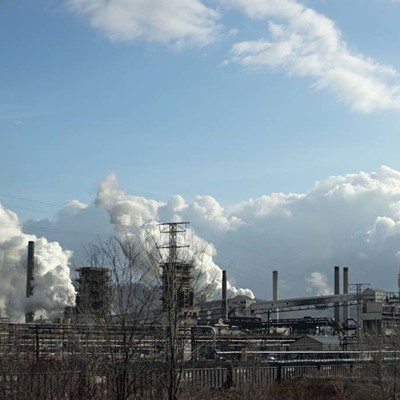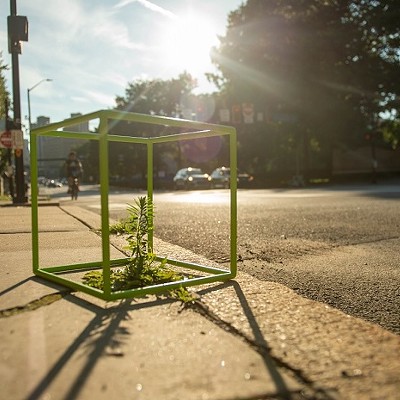Last week, the state's Department of Environmental Protection ruled that the cause of extensive damage to the dam at Duke Lake, at Greene County's Ryerson Station State Park, was longwall coal-mining. A nearby Consol Energy mine, says the DEP, destabilized the land.
While Consol plans to appeal, the ruling comports with years of complaints by property owners that longwall mining (which leaves no underground supports) has damaged buildings and ruined waterways throughout the region.
Meanwhile, in states including West Virginia, the coal industry continues mountaintop-removal mining. This involves smashing up to 600 feet off a mountaintop for the coal inside -- destroying biologically rich forest -- and then dumping tons of rock and earth into nearby valleys. The EPA says mountaintop removal has buried more than 1,000 miles of streams in West Virginia alone.
Such practices are seldom mentioned during discussions of the oxymoron called "clean coal." Also undiscussed are health effects on residents of such coalfields, often left with polluted water, dirty air and mudslide-prone land.
And then there's what remains after all that coal is burned for electricity: some 129 million tons of coal ash a year. It's a hazardous load ripe with toxic metals, held in dumps like the one that burst in 2008, loosing a billion gallons of waste in Tennessee. Or like Little Blue Run, FirstEnergy's 1,300-acre reservoir on the Ohio River, about 25 miles from Pittsburgh.
When engineers and politicians say "clean coal," they never mention mining itself, or coal ash. They refer instead to the fact that coal-burning power plants are the single largest emitter of carbon dioxide, the main cause of climate change. The chief "clean coal" scheme is a process called carbon capture and storage (CCS): The CO2 is trapped, liquefied, then pumped deep underground.
CCS is untested on a large scale. But conventional wisdom from the White House to academia considers it a tool for fighting climate change that would let us keep bleeding the nation's rich veins of coal.
However, CCS is controversial in environmental circles. Partly because it reduces the efficiency of power plants by 30 percent or more, CCS could double the price of electricity. And transporting and storing CO2 would demand a vast new infrastructure: Four decades of CO2 from just one medium-sized power plant would saturate 100 square miles of deep-rock formations. That's according to John Quigley, acting secretary of Pennsylvania's Department of Conservation and Natural Resources -- and he favors CCS.
While some environmental groups also favor CCS, Greenpeace, for one, calls CCS "a smokescreen for building new coal-fired power stations."
CCS is a key to energy bills working their way through Pennsylvania's state House and Senate. Rep. Greg Vitali, a Southeastern PA Democrat, introduced the House bill, which would boost the state's renewable-energy requirements. It would also give utilities incentives to install CCS equipment -- "renewable-energy credits" that would apply even if no CO2 were ever captured because there was nowhere to store it.
Vitali says such a provision is necessary to protect investors in the technology. While he'd prefer more ambitious mandates for renewables like wind and solar energy, he says, "The reality is, we're not going to stop burning coal in the next decade or two." Citing the threat of climate change, Vitali says, "Doing nothing really runs the most risk of all."
But is CCS really necessary? In 2008, Al Gore famously challenged us to get off fossil fuels completely in 10 years. While coal, for instance, generates about 40 percent of the nation's electricity, Gore's Repower America initiative contends his goal is attainable with a combination of efficiency, solar, wind and nuclear energy.
Even by optimistic estimates, CCS is so expensive and logistically problematic that it won't be deployable commercially for a decade, and not widely available for years after. Even if we reached Gore's goal at half-speed, by the time CCS was widely used, we'd hardly need it any more.
And rather than pour money into what Sierra Club of Pennsylvania director Jeff Schmidt calls "the carbon-sequestration black hole," why not apply those millions in research dollars and incentives toward efficiency and renewables?
Financially and environmentally, CCS seems an expensive way to end up paying more for electricity.
With CCS, "We're going to see more mining, and we're going to see more destructive mining, probably," says Cassie McCrae of the Pennsylvania Alliance for a Coal-Free Future. "It's just such a false solution."














